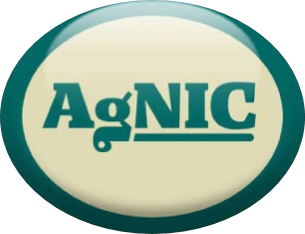Hoping for rain is not a drought strategy
You cannot control drought, but you can lessen it’s impact on your ranching operation through a contingency plan. We have information on drought contingency planning on this page and at droughtadvisors.org. Most of the drought planning strategies are best used before a drought when there is more flexibility in time, resources, and mental energy.
Drought Planning Basics
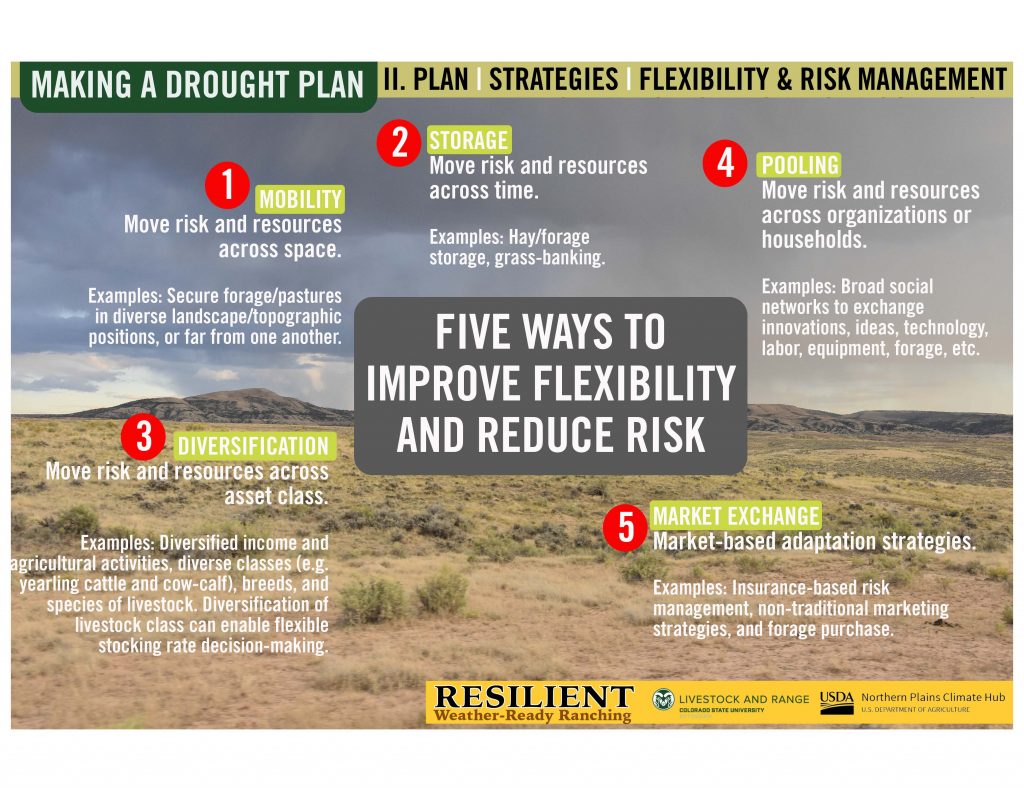
1) You don’t have to plan for drought alone
Drought Advisors is a network of professionals in Colorado who have developed a Drought Planning Handbook, website, and more.
Drought plan examples are available at Droughtadvisors.org and in this ‘fireside chat’ recorded during the 2020 drought, featuring: Annie Overlin and Kevin Jablonski – CSU Range Extension, Justin Derner- USDA-ARS, David Augustine-ARS, Dannele-USDA-ARS, John Ritten- UWY, Steve Oswald and Kenny Burk- southern CO ranchers
2) Predict it.
- While predicting drought is imperfect, these resources provide more information to ranchers than ever available before to help managers make informed decisions.

3) Have a plan and set critical dates for making decisions.
- Check out our new Colorado-specific Drought Planning Handbook
- Check out our Webinars and presentations on the drought planning process
- Early Warning for Stocking Decisions in Eastern Colorado provides a decision tree for the eastern plains.
- The National Drought Mitigation Center provides resources for planning for drought and a Handbook.
4) Consider strategies to increase flexibility and reduce risk.
- Strategies ma
 y include 1) setting a conservative stocking rate, 2) adding yearling livestock to cow-calf operations, or 3) setting aside a pasture as a grass-banking strategy.
y include 1) setting a conservative stocking rate, 2) adding yearling livestock to cow-calf operations, or 3) setting aside a pasture as a grass-banking strategy. - The Colorado Drought Planning Handbook details many different strategies.
5) Learn more!
Ag & Business
Agriculture & Business Management – Decision Tools

Decision tools for Managing Drought Risk
- Buy Hay or Sell Cows and more
- Check out our new Colorado-specific Drought Planning Handbook
- Strategies for Cattle Herd During Drought
- Custom rates for agriculture – Data on rates charged for various crop and livestock operations and lease agreements in Colorado based on survey data.
Alternative Forages
Forage Testing & Alternatives

Alternative forages can be a money saving strategy because the cost of hay can increase substantially in drought. Check out the resources below for more info. If you do choose an alternative forage, make sure you get it tested. Some forages, such as sorghum, can concentrate nitrates in drought and stressful conditions. Excess nitrates can be toxic to livestock. Check out the resources below for more info.
- Alternative feeds for cattle during drought by R. Baird LeValley
- Sheep feeds and management guidelines during drought – 1.633 by S. LeValley
- Forage Testing Submittal Form – CSU Labs (testing for nitrates)
- Ward Labs for forage testing
Emergency Preparedness
Emergency Planning and Preparedness
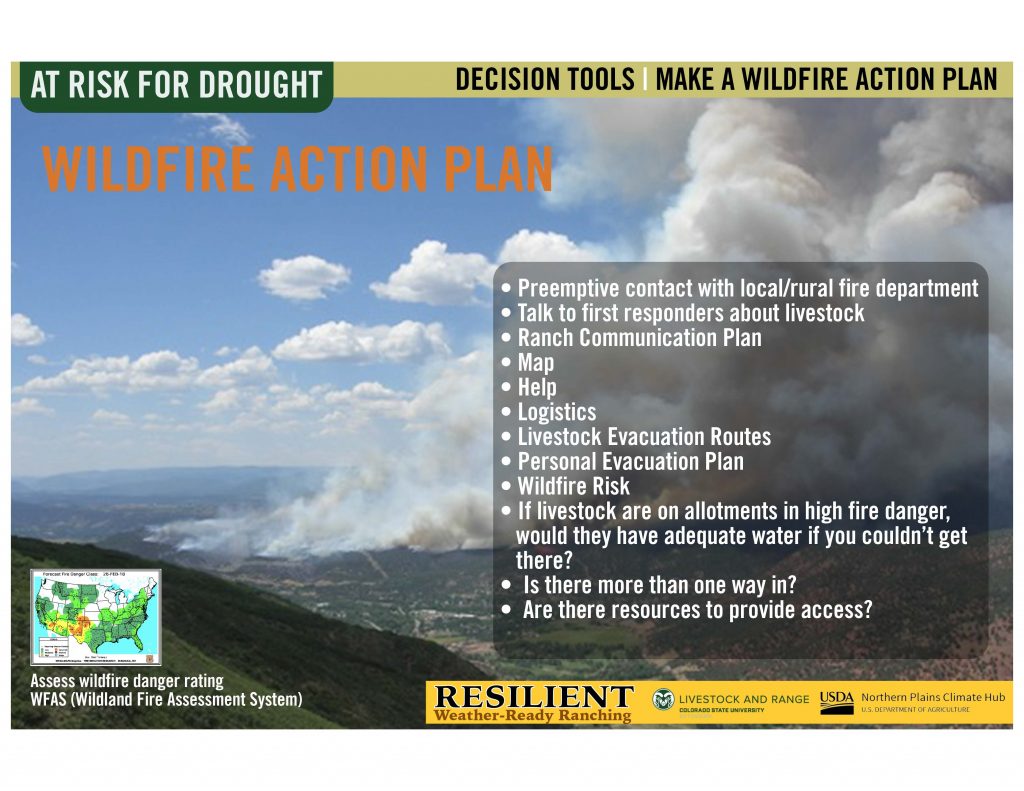
- Emergency Planning & Preparedness – Colorado Department of Agriculture
- Animals in Disaster Resources for Emergency Managers, CART’s and Animal Emergency Responders
- Farmers and Ranchers Get Ready: Protect Your Operation Before, During, and After a Disaster – Fact Sheet
- Caring for Livestock After Disaster
- Caring for Livestock Before Disaster
- Caring for Livestock During Disaster
Stress Management
Stress Management Resources
- Managing Stress During Tough Times – Fact Sheet by R.J. Fetsch
- Making Decisions and Coping Well with Drought – Fact Sheet by R.J Fetsch
- Farm and Ranch Family Stress and Depression: A Checklist and Guide for Making Referrals – Fact Sheet by R.J. Fetsch and Roger T. Williams
- Colorado Crisis Services
- Colorado Department of Ag – Crisis Services
Drought Planning
Rangeland Management During Drought
- Rangeland Management Before, During, and After Drought by Larry Howery
- Pasture Weed Management and Drought by James Locke
Drought Planning
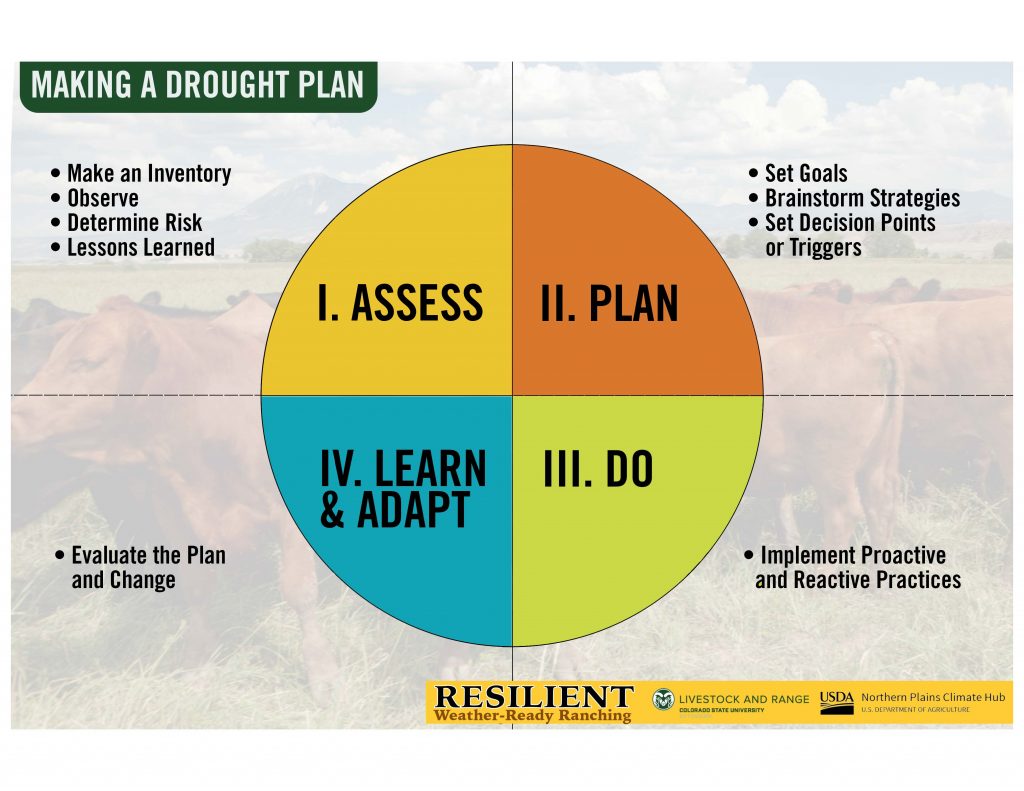
- The Colorado Ag Drought Planning Handbook
- An Easy to Use System for Developing a Drought Management Contingency Plan By Doug Tolleson
- Managing Drought Risk on the Ranch: A Planning Guide for Great Plains Ranchers University of Nebraska – Lincoln |National Drought Mitigation Center
“Triggers” in Drought Management
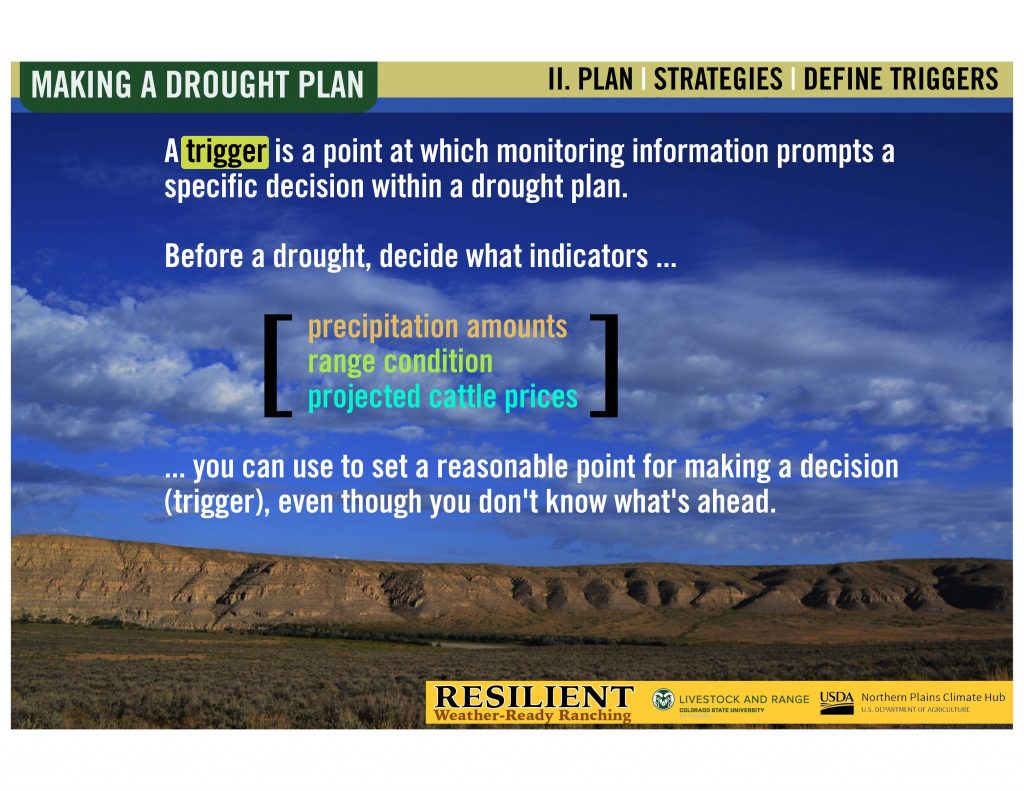
“Triggers” are used in drought planning as a specific sign that activates a management response. A trigger might be percent of average precipitation, or a stock pond that fills (or doesn’t) by a certain date, couple with an action like “de-stock by a certain amount” or other action. For example from a Nebraska ranch has formulated their trigger this way:
- They usually receive 75% of the precipitation between Nov. and June 15.
- If they receive less than 80% of average precipitation between Nov. 1 and June 15, they estimate that the forage crop will be reduced by 30%, and de-stock accordingly (de-stock 30% by weight).
Resources for creating “triggers” include:
- The Colorado Ag Drought Planning Handbook
- An Easy to Use System for Developing a Drought Management Contingency Plan By Doug Tolleson
- Managing Drought Risk on the Ranch: A Planning Guide for Great Plains Ranchers University of Nebraska – Lincoln |National Drought Mitigation Center
For eastern Colorado, GrassCast is one tool to understand forecasts for forage production. This tool gives estimates based on precipitation scenarios and years of rangeland production data. https://grasscast.unl.edu/
Poisonous Plants
Poisonous Plants | Toxicity Issues
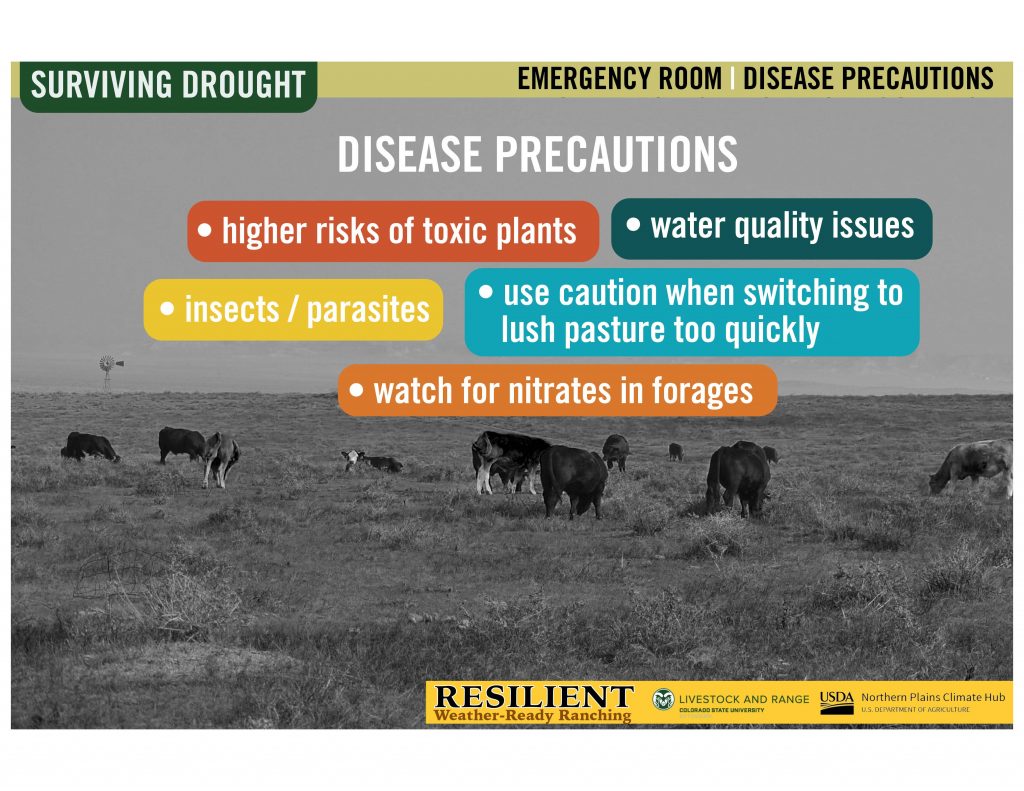
- Managing Western Whorled Milkweed – Fact Sheet By Bob Hammon and C.H. Pearson
- Nitrate Poisoning – Fact Sheet 1.610 by J.C. Whittier
- Fog Fever – Acute Bovine Pulmonary Emphysema and Edema – Fact Sheet UC Davis Vet Veiws
- Cyanobacteria Poisoning (Blue-green Algae) by Miranda Meehan & Michelle Mostrom
- Why livestock die from eating poisonous plants by Beth Burritt Fact sheet here
Veterinarian and Diagnostic Information
Forecasts: Weather & Markets
Cattle Market Report Lists
Weather & Climate Information
- The National Drought Mitigation Center’s monitoring dashboard features the latest data on drought and precipitation conditions, outlooks, on-the-ground reports, vegetative stress, forage productivity and more, organized around the key questions, such as “what is my current drought situation?”, “How does this year compare to last year?” and “What can I expect for forage production this year?” A user who clicks on the question about drought severity, and how it compares to past droughts, is led to an interactive display that presents current U.S. Drought Monitor conditions and allows for historical comparisons. Other common questions lead users to other vital resources that can be displayed on a U.S. map, and used together, the map’s layers provide a clear picture of current drought conditions and expectations.
Other Sources for Climate and Weather information
- The Colorado Ag Drought Planning Handbook
- One-stop shopping for climate and weather tools – Rocky Mountain High Plains Climate Dashboard
- Intermountain West Drought Early Warning System – This site is updated weekly with recommendations that they send directly to the U.S. Drought Monitor.
- Wildland Fire Assessment System


